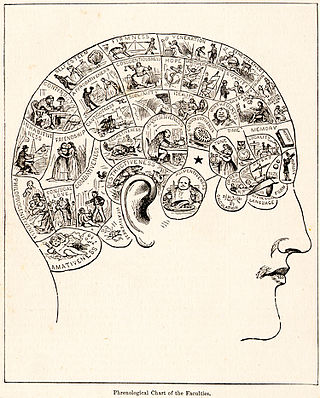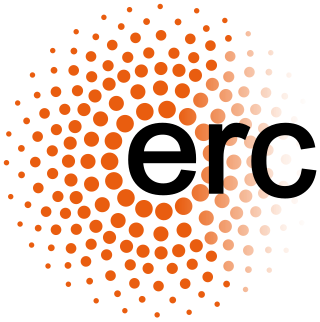Related Research Articles
Junk science is spurious or fraudulent scientific data, research, or analysis. The concept is often invoked in political and legal contexts where facts and scientific results have a great amount of weight in making a determination. It usually conveys a pejorative connotation that the research has been untowardly driven by political, ideological, financial, or otherwise unscientific motives.

Pseudoscience consists of statements, beliefs, or practices that claim to be both scientific and factual but are incompatible with the scientific method. Pseudoscience is often characterized by contradictory, exaggerated or unfalsifiable claims; reliance on confirmation bias rather than rigorous attempts at refutation; lack of openness to evaluation by other experts; absence of systematic practices when developing hypotheses; and continued adherence long after the pseudoscientific hypotheses have been experimentally discredited. It is not the same as junk science.

Research is "creative and systematic work undertaken to increase the stock of knowledge". It involves the collection, organization and analysis of evidence to increase understanding of a topic, characterized by a particular attentiveness to controlling sources of bias and error. These activities are characterized by accounting and controlling for biases. A research project may be an expansion of past work in the field. To test the validity of instruments, procedures, or experiments, research may replicate elements of prior projects or the project as a whole.
Science is a rigorous, systematic endeavor that builds and organizes knowledge in the form of testable explanations and predictions about the world. Modern science is typically divided into three major branches: the natural sciences, which study the physical world; the social sciences, which study individuals and societies; and the formal sciences, which study formal systems, governed by axioms and rules. There is disagreement whether the formal sciences are science disciplines, because they do not rely on empirical evidence. Applied sciences are disciplines that use scientific knowledge for practical purposes, such as in engineering and medicine.

An unidentified flying object (UFO), or unidentified anomalous phenomenon (UAP), is any perceived aerial phenomenon that cannot be immediately identified or explained. Upon investigation, most UFOs are identified as known objects or atmospheric phenomena, while a small number remain unexplained.

Science policy is concerned with the allocation of resources for the conduct of science towards the goal of best serving the public interest. Topics include the funding of science, the careers of scientists, and the translation of scientific discoveries into technological innovation to promote commercial product development, competitiveness, economic growth and economic development. Science policy focuses on knowledge production and role of knowledge networks, collaborations, and the complex distributions of expertise, equipment, and know-how. Understanding the processes and organizational context of generating novel and innovative science and engineering ideas is a core concern of science policy. Science policy topics include weapons development, health care and environmental monitoring.

Academic publishing is the subfield of publishing which distributes academic research and scholarship. Most academic work is published in academic journal articles, books or thesis. The part of academic written output that is not formally published but merely printed up or posted on the Internet is often called "grey literature". Most scientific and scholarly journals, and many academic and scholarly books, though not all, are based on some form of peer review or editorial refereeing to qualify texts for publication. Peer review quality and selectivity standards vary greatly from journal to journal, publisher to publisher, and field to field.

The Particle Physics and Astronomy Research Council (PPARC) was one of a number of research councils in the United Kingdom. It directed, coordinated and funded research in particle physics and astronomy for the people of the UK. Its head office was at Polaris House in Swindon, Wiltshire, but it also operated three scientific sites: the UK Astronomy Technology Centre in Edinburgh, the Isaac Newton Group of Telescopes (ING) in La Palma and the Joint Astronomy Centre (JAC) in Hawaii. It published the Frontiers magazine three times a year, containing news and highlights of the research and outreach programmes it supports.
E-Science or eScience is computationally intensive science that is carried out in highly distributed network environments, or science that uses immense data sets that require grid computing; the term sometimes includes technologies that enable distributed collaboration, such as the Access Grid. The term was created by John Taylor, the Director General of the United Kingdom's Office of Science and Technology in 1999 and was used to describe a large funding initiative starting in November 2000. E-science has been more broadly interpreted since then, as "the application of computer technology to the undertaking of modern scientific investigation, including the preparation, experimentation, data collection, results dissemination, and long-term storage and accessibility of all materials generated through the scientific process. These may include data modeling and analysis, electronic/digitized laboratory notebooks, raw and fitted data sets, manuscript production and draft versions, pre-prints, and print and/or electronic publications." In 2014, IEEE eScience Conference Series condensed the definition to "eScience promotes innovation in collaborative, computationally- or data-intensive research across all disciplines, throughout the research lifecycle" in one of the working definitions used by the organizers. E-science encompasses "what is often referred to as big data [which] has revolutionized science... [such as] the Large Hadron Collider (LHC) at CERN... [that] generates around 780 terabytes per year... highly data intensive modern fields of science...that generate large amounts of E-science data include: computational biology, bioinformatics, genomics" and the human digital footprint for the social sciences.

Chromotherapy, sometimes called color therapy, colorology or cromatherapy, is an alternative medicine that is considered pseudoscience and quackery. Chromotherapists claim to be able to use light in the form of color to balance "energy" lacking from a person's body, whether it be on physical, emotional, spiritual, or mental levels. For example, they thought that shining a colored light on a person would cure constipation. Historically chromotherapy has been associated with mysticism and occultism.
Research funding is a term generally covering any funding for scientific research, in the areas of natural science, technology, and social science. Different methods can be used to disburse funding, but the term often connotes funding obtained through a competitive process, in which potential research projects are evaluated and only the most promising receive funding. It is often measured via Gross domestic expenditure on R&D (GERD).

The European Research Council (ERC) is a public body for funding of scientific and technological research conducted within the European Union (EU). Established by the European Commission in 2007, the ERC is composed of an independent Scientific Council, its governing body consisting of distinguished researchers, and an Executive Agency, in charge of the implementation. It forms part of the framework programme of the union dedicated to research and innovation, Horizon 2020, preceded by the Seventh Research Framework Programme (FP7). The ERC budget is over €13 billion from 2014 – 2020 and comes from the Horizon 2020 programme, a part of the European Union's budget. Under Horizon 2020 it is estimated that around 7,000 ERC grantees will be funded and 42,000 team members supported, including 11,000 doctoral students and almost 16,000 post-doctoral researchers.

Open science is the movement to make scientific research and its dissemination accessible to all levels of society, amateur or professional. Open science is transparent and accessible knowledge that is shared and developed through collaborative networks. It encompasses practices such as publishing open research, campaigning for open access, encouraging scientists to practice open-notebook science, broader dissemination and engagement in science and generally making it easier to publish, access and communicate scientific knowledge.

Bad Astronomy: Misconceptions and Misuses Revealed, from Astrology to the Moon Landing "Hoax" is a non-fiction book by the American astronomer Phil Plait, who is also known as "the Bad Astronomer". The book was published in 2002 and deals with various misunderstandings about space and astronomy, such as sounds being audible in space.
Donald W. Braben is a British author and Honorary Professor in the Office of the Vice-Provost (Research), University College London.
The American Journal of Biological Anthropology is a peer-reviewed scientific journal and the official journal of the American Association of Biological Anthropologists. It was established in 1918 by Aleš Hrdlička.

Technology, society and life or technology and culture refers to the inter-dependency, co-dependence, co-influence, and co-production of technology and society upon one another. Evidence for this synergy has been found since humanity first started using simple tools. The inter-relationship has continued as modern technologies such as the printing press and computers have helped shape society. The first scientific approach to this relationship occurred with the development of tektology, the "science of organization", in early twentieth century Imperial Russia. In modern academia, the interdisciplinary study of the mutual impacts of science, technology, and society, is called science and technology studies.
Basic research, also called pure research, fundamental research, basic science, or pure science, is a type of scientific research with the aim of improving scientific theories for better understanding and prediction of natural or other phenomena. In contrast, applied research uses scientific theories to develop technology or techniques which can be used to intervene and alter natural or other phenomena. Though often driven simply by curiosity, basic research often fuels the technological innovations of applied science. The two aims are often practiced simultaneously in coordinated research and development.

Ulf Leonhardt, FRSE is a German and British scientist. In 2006, he published the first scientific paper on invisibility cloaking with metamaterials at the same time Pendry's group published their paper in the journal Science. He has been involved with the science of cloaking objects since then.
Metascience is the use of scientific methodology to study science itself. Metascience seeks to increase the quality of scientific research while reducing inefficiency. It is also known as "research on research" and "the science of science", as it uses research methods to study how research is done and find where improvements can be made. Metascience concerns itself with all fields of research and has been described as "a bird's eye view of science". In the words of John Ioannidis, "Science is the best thing that has happened to human beings ... but we can do it better."
References
- ↑ Bell, David (2005). Science, Technology and Culture. McGraw-Hill International. p. 33. ISBN 978-0-335-21326-9.
- 1 2 Linden, Belinda (February 29, 2008). "Basic Blue Skies Research in the UK: Are we losing out?". Journal of Biomedical Discovery and Collaboration. 3 (1): 3. doi: 10.1186/1747-5333-3-3 . PMC 2292148 . PMID 18312612.
- 1 2 Henderson, Mark (September 19, 2005). "Politics clouds blue-sky science". The Times. Retrieved April 26, 2010.
- ↑ Comroe J. Retrospectroscope – What makes the Sky Blue? American Review Respiratory Disease. 1976;113:219–22.
- ↑ "To what extent should UK funding for science and innovation be focussed?". Foundation for Science and Technology. Retrieved February 21, 2009.
- 1 2 Smith, C.H. Llewellyn (1997). The use of basic science. CERN.
- ↑ Jeffrey, Richard C. (1990). The Logic of Decision. University of Chicago Press. pp. xiv. ISBN 978-0-226-39582-1.
- ↑ Fedoroff, Nina (January 27, 2005). "Peering out of the box (Review of 'Pioneering Research: A Risk Worth Taking')". Nature. 433 (7024): 361. doi: 10.1038/433361a .
- ↑ Travis, John (February 12, 2009). "Is the (Blue) Sky Falling in the U.K?". ScienceInsider. Science. Archived from the original on February 18, 2009. Retrieved February 23, 2009.
- ↑ "Theo Murphy Blue Skies awards". The Royal Society. Retrieved November 21, 2023.
- ↑ "IDEAS Factory" (Press release). UKRI. August 17, 2021. Retrieved February 6, 2024.
- ↑ "Blue Sky II 2006". Statistics Canada. Archived from the original on 2009-01-16.